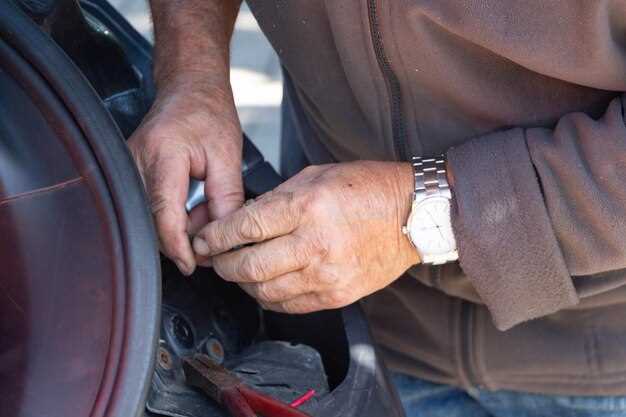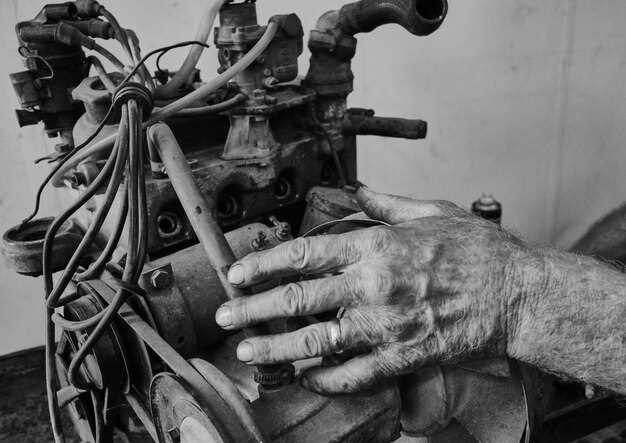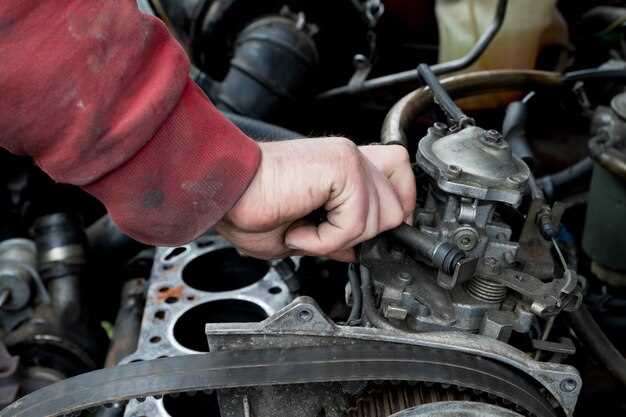
Owning a vintage racing car is a thrilling experience, offering a unique blend of nostalgia and adrenaline. However, maintaining these classic vehicles requires a special approach to keep them running smoothly and reliably. Unlike modern cars, vintage automobiles often come with their own set of challenges, making proper maintenance essential for both performance and longevity.
Understanding the intricacies of car mechanics from a bygone era is crucial for any enthusiast. Older racing vehicles were built with different materials and technologies that demand tailored care. This guide will delve into essential maintenance practices that are vital for preserving the integrity and performance of your vintage racing car.
No matter if you’re preparing for a vintage car rally or simply enjoying a Sunday drive, consistent and knowledgeable maintenance can make all the difference. From routine checks to specialized repairs, every aspect of upkeep plays a significant role in keeping your car in prime condition. With the right techniques and mindset, you can ensure that your classic racing vehicle remains a source of pride and excitement for years to come.
Choosing the Right Oils and Fluids for Vintage Engines

Maintaining a vintage car requires special attention, particularly when it comes to selecting the appropriate oils and fluids for its engine. Classic vehicles often have unique engineering specifications and requirements that differ from modern cars, making careful selection of lubricants essential for performance and longevity.
Engine Oil is the lifeblood of any vehicle, and for vintage engines, using the right type is critical. Many classic cars originally utilized non-detergent oils, but the modern consensus is to opt for oils that contain detergents to help keep the engine clean. Look for oils with a viscosity appropriate for the engine’s design; many vintage vehicles function best with multi-grade oils like 10W-30 or 20W-50, depending on environmental conditions.
Transmission Fluid plays a significant role in the overall health of a vintage car. Some classic vehicles have unique transmission designs that require specific types of fluids. Always refer to the owner’s manual or consult with vintage car experts to ensure you’re using the correct fluid to avoid any potential damage.
Coolant is another vital fluid for vintage engines. Older cars often feature brass and copper components, which can be corroded by modern coolants containing additives. Opt for a coolant that is compatible with vintage materials, such as those labeled as “classic” or “restoration” coolants, ensuring the engine operates at optimal temperatures without compromising its integrity.
Brake Fluid selection also cannot be overlooked. Many classic cars were designed to use DOT 3 or DOT 4 fluids. Be cautious with modern, synthetic brake fluids, as they may not be fully compatible with older rubber seals and components. Regularly checking and replacing brake fluid is essential for safe operation.
Finally, always pay close attention to oil filters and fuel additives that are suitable for classic vehicles. Using a high-quality oil filter can make a significant difference in maintaining engine cleanliness. Meanwhile, fuel additives designed for vintage cars can help prevent fuel system issues often associated with modern fuels.
In summary, choosing the right oils and fluids for vintage engines is crucial for preserving both performance and reliability. Always research the specific needs of your classic vehicle and consult professionals when in doubt to ensure your treasured car remains in top shape for years to come.
Common Electrical Issues in Classic Cars and How to Troubleshoot Them

Classic cars, often celebrated for their vintage charm and timeless appeal, can present a range of electrical issues that may be daunting for owners. Understanding these problems and knowing how to troubleshoot them is essential for maintaining the functionality and reliability of your classic vehicle.
1. Dead Battery
A dead battery is one of the most common problems in classic cars, often due to age or lack of use. Check the battery connections for corrosion and ensure they are tight. If the battery is old, consider replacing it with a new one specifically designed for vintage vehicles to maintain proper voltage.
2. Faulty Alternator
The alternator is crucial for charging the battery while the car is running. Symptoms of a failing alternator include dimming headlights and electrical accessories that are slow to respond. Test the alternator’s output with a multimeter. If it fails to produce sufficient voltage, replacement may be necessary.
3. Worn Wiring
Electrical wiring in classic cars can degrade over time, leading to shorts or complete failures. Inspect wiring for fraying, cracking, or corrosion. Use electrical tape or heat-shrink tubing to repair minor issues, but consider replacing sections of wiring that are too worn to ensure safety and reliability.
4. Malfunctioning Fuses
Blown fuses can interrupt power to various systems within the car. If you notice certain electrical components are not working, check the fuse box for blown fuses and replace them as necessary. Always replace a fuse with one of the same amperage to avoid further issues.
5. Ignition System Problems
Issues with the ignition system, such as faulty spark plugs or a malfunctioning ignition coil, can prevent your classic car from starting. Inspect and replace worn components, ensuring all connections are secure. Regular maintenance of these parts is key to reliable operation.
6. Bad Ground Connections
Poor grounding can lead to a multitude of electrical problems, including intermittent issues and poor performance of electrical components. Check all ground connections for tightness and cleanliness. Cleaning terminals and ensuring proper connections can resolve many electrical issues.
In conclusion, maintaining the electrical system in classic cars requires diligence and knowledge. Regular inspections and proactive troubleshooting can prevent small issues from escalating, preserving the enjoyment and functionality of your vintage vehicle for years to come.
Restoring and Preserving Classic Car Interiors: Tips and Techniques
When it comes to maintaining a vintage car, the interior is just as important as the exterior. Restoring and preserving classic car interiors involves careful attention to detail and using the right techniques to ensure longevity and authenticity.
Assessing the Condition of the Interior: Before undertaking any restoration, start by evaluating the current state of the interior. Look for signs of wear, sun damage, or materials that need to be replaced. Documenting the condition will help prioritize what needs immediate attention and what can be addressed later.
Cleaning the Interior: A thorough cleaning is essential before any restoration work begins. Use mild cleaning solutions and soft cloths to gently clean surfaces like dashboards, seats, and door panels. For upholstery, specialized cleaners can help preserve the fabric or leather without causing additional damage.
Upholstery Restoration: If the seats or interior panels require reupholstering, opt for materials that match the vintage car’s original specifications. Authenticity matters in vintage maintenance, so sourcing original patterns or materials can enhance the vehicle’s value. Skilled upholsterers can also help maintain the car’s vintage aesthetic while restoring comfort.
Dashboard and Instrument Panel: Often, the dashboard and instrument panel may show signs of aging. Check for cracks or fading in the plastic or wood. Consider using specialized restoration kits to repair any imperfections. If gauges or electronics are not functioning, seek professional help for repairs to ensure the accuracy and safety of the vehicle.
Preserving Original Components: Wherever possible, retain original components such as knobs, switches, and trim pieces. These elements add character and authenticity to a vintage car. If parts are broken or malfunctioning, explore the option of repairing them instead of replacing them with non-original pieces.
Protective Measures: Once restoration is complete, invest in protective measures to help keep the interior in top condition. Using UV protectants on fabrics and leathers can prevent fading, while regular cleaning and conditioning maintain the aesthetic appeal over time. Consider installing sunshades when parking outdoors to minimize sun exposure.
Regular Maintenance: Regular inspections and upkeep of the interior are crucial. Schedule periodic cleaning and check for any signs of wear or damage, which can be addressed promptly. Establishing a maintenance routine will not only keep the vintage car looking great but will also enhance its longevity.
By following these tips and techniques for restoring and preserving classic car interiors, enthusiasts can ensure their vintage vehicles remain as stunning inside as they are outside, contributing to the overall experience of driving and maintaining a piece of automotive history.



